UPSC Daily Current Affairs- 31st March 2024 | Current Affairs & Hindu Analysis: Daily, Weekly & Monthly PDF Download
GS-I
Madagascar
Subject: Geography
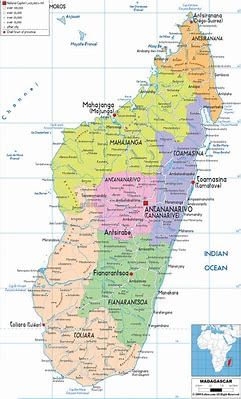
Why in News?
A tropical cyclone called Gamane recently struck Madagascar, leading to the loss of at least 18 lives and the displacement of numerous individuals as reported by the country's disaster management office.
About Madagascar
- Positioned in the Indian Ocean off the coast of East Africa, Madagascar stands as the world's second-largest island nation, spanning an area of 592,800 square kilometers.
Geography:
Madagascar's geographical layout comprises three primary longitudinal physiographic zones:
- The eastern coastal belt
- The central plateau
- The western low plateaus and plains
The northern Tsaratanana Massif region hosts Maromokotro, the island's highest peak at 2,876 meters.
History: In 1883, Madagascar was invaded by France, which subsequently declared it a French colony in 1896. The Malagasy Uprising, a struggle for independence, erupted in 1947 following World War II. Madagascar finally achieved independence in 1960.
Capital: The capital of Madagascar is Antananarivo.
Languages: Malagasy and French are the official languages of the country.
Government: Madagascar operates as a semi-presidential republic where the public elects a president who appoints a prime minister to form a cabinet for advising the president.
Economy: Agricultural industries, including forestry and fishing, drive 80% of Madagascar's economy. Key agricultural exports encompass coffee, vanilla, and sugarcane.
Biodiversity: Madagascar's diverse ecosystems encompass rainforests, deserts, plains, coral reefs, and mangrove forests. The island's isolation has fostered unique biodiversity, with nearly 90% of its plant and animal species being endemic.
Source: India Today
International Rice Research Institute
Subject: Geography
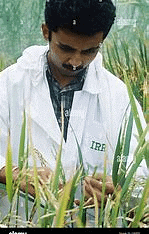
Why in News?
Recently, the International Rice Research Institute (IRRI) announced the focus of the IRRI-South Asia Regional Centre (ISARC) on developing rice varieties with reduced methane emissions.
About International Rice Research Institute
- It is an independent, non-profit research and educational organization established in 1960 by the Ford and Rockefeller foundations with assistance from the Philippine government.
- Serving as the leading global research institution dedicated to alleviating poverty, hunger, and malnutrition through advancements in rice science.
- Its primary goal is to enhance the well-being of communities reliant on rice-based agricultural systems and to advocate for the sustainability of rice farming for future generations.
- IRRI's research approach emphasizes collaboration, including partnerships with leading research institutions and extensive engagement with governments and national agricultural research systems.
- The Government of India, through a Gazette notification, recognizes IRRI as an international entity, granting it privileges and immunities akin to those of United Nations organizations under the UN Privileges and Immunities Act 1947, applicable to all IRRI operations in India, including the IRRI South Asia Regional Centre.
- Headquarters
- Location: Los Banos, Philippines.
Source: Hindustan Times
Vaikom Satyagraha
Subject: History and Culture

Why in News?
India's celebrated protest, 'Vaikom Satyagraha', recently marked its 100th anniversary.
About Vaikom Satyagraha:
- First anti-caste movement aimed at allowing the depressed classes and untouchables access to the Shree Mahadeva Temple in Vaikom, Kottayam district.
Background:
- Ezhava leader TK Madhavan highlighted the issue of temple entry in a 1917 editorial in Deshabhimani.
- In a 1923 AICC meeting in Kakinada, K Madhavan, Sardar Panikkar, and KP Kesava Menon petitioned the Travancore legislative council for temple entry rights.
- The movement officially began on 30th March 1924 in response to the petition.
Movement Details:
- The movement centered around the Mahadev Temple in Kottayam district, Kerala, spanning 1924-1925.
Factors behind the Satyagraha:
- Christian missionaries, backed by the East India Company, led many lower castes to convert to Christianity to escape oppression.
- Maharaja Ayilyam Thirunal introduced progressive reforms, including a modern education system with free primary education for all, regardless of caste.
- Prominent supporters included Sree Narayana Guru and Periyar E.V Ramaswamy.
GS-II
Konda Reddi Tribe
Subject: Polity and Governance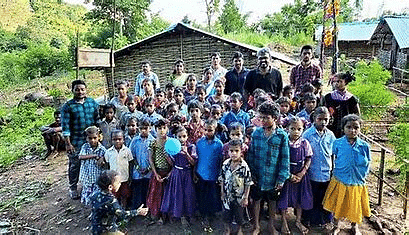
Why in News?
The indigenous knowledge of the Konda Reddi tribe, a Particularly Vulnerable Tribal Group inhabiting the Papikonda hill range in the Godavari region, has proven resourceful.
About Konda Reddi Tribe:
- Konda Reddis are a Particularly Vulnerable Tribal Group living along the banks of the river Godavari and in the hilly forest tracts of Andhra Pradesh.
- Their mother tongue is Telugu, spoken with a unique accent.
Subdivisions:
- The Konda Reddi tribe is divided into exogamous septs to regulate matrimonial relations.
- Similar to other Telugu-speaking communities, surnames are prefixed to individual names.
- While most septs are exogamous, certain septs are considered brother septs with marriage alliances prohibited.
Family and Marriage:
- Their society follows a patriarchal and patrilocal family structure.
- While monogamy is the norm, polygamous families also exist.
- Marriage practices include negotiations, love and elopement, service, capture, and exchange.
Religion:
- The primary religion among the Konda Reddi is Folk Hinduism, which involves local traditions and worship of community-level deities.
Political Organization:
- They have a social control institution known as 'Kula Panchayat'.
- Each village is led by a traditional headman called 'Pedda Kapu', who also serves as the village priest.
Livelihood:
- Mostly engaged in shifting cultivation, they rely on forest resources for sustenance.
- They gather and sell non-timber forest products like tamarind, adda leaves, and broom sticks for additional income.
- Jowar cultivation is predominant as it serves as their staple food.
Source: The Hindu
GS-III
UNEP Food Waste Index Report, 2024
Subject: Economy
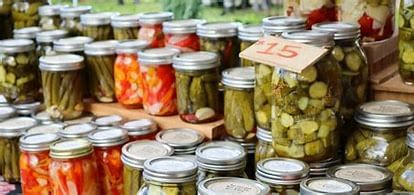
Why in News?
The Food Waste Index Report, 2024 was recently released by the United Nations Environment Programme (UNEP) and Waste & Resources Action Programme (WRAP), a UK based non-profit organization.
Key Findings of the 2024 Report
- Total Food Waste Generation in 2022:
- Globally, 1.05 billion tonnes of food waste were generated in 2022.
- Distribution of Food Waste by Sector:
- Households accounted for 60% of the total food waste.
- Food services were responsible for 28% of the total food waste.
- Retail accounted for 12% of the total food waste.
- Per Capita Food Waste:
- The average per capita food waste was 132 kilograms in 2022.
- Economic Cost of Food Waste:
- The economic toll of food loss and waste is estimated at $1 trillion.
- Contribution to Greenhouse Gas Emissions:
- Food loss and waste contribute significantly to greenhouse gas emissions, accounting for 8-10% of annual global emissions.
- Regional Trends:
- Food waste levels vary minimally across income groups.
- Hotter climates tend to generate more household food waste due to consumption patterns and infrastructure limitations.
- Rural areas generally exhibit lower levels of food waste compared to urban areas.
- Policy Integration:
- Only 21 countries, including Australia, Japan, the United Kingdom, the United States, and the European Union, have included food loss and waste reduction in their climate plans or Nationally Determined Contributions (NDCs).
Source: Indian Express
How much should developed countries pay for climate action?
Subject: Environment
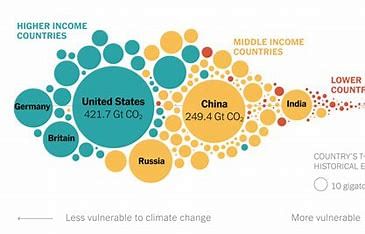
Why in News?
As the climate bomb ticks, Global Climate negotiators are working on a new global climate finance budget ahead of COP29 in Baku this November.
In 2009, developed countries committed to paying $100 bn every year. However, they failed to do so.
Context:
- The 2022 climate change conference (COP 28) held in Sharm el-Sheikh decided to establish a Loss and Damage Fund.
- These funds would work as a “transition away” from fossil fuels, and a promise to triple global renewable energy capacity by 2030.
- On March 22, a two-day meeting was concluded in Copenhagen, Denmark, the first minister-level climate meeting for this year, and a ‘New Collective Quantitative Goal’ was finalized.
What is the New Collective Quantitative Goal (NCQG)?
- NCQG represents the yearly sum that developed countries must gather from 2025 onward to finance climate action in developing nations.
- It has to be higher than the $100 billion that developed countries, collectively, had promised to raise every year from 2020, but had failed to deliver.
Significance of collective Funds to ensure effective Climate Action:
- UN Climate Change Report (2021): According to a report by UN Climate Change, developing countries would need approximately $6 trillion annually between 2021 and 2030 to implement their climate action plans.
- Estimation in Sharm el-Sheikh Agreement: The final agreement at Sharm el-Sheikh included estimates suggesting that a global transition to a low-carbon economy could require about $4-6 trillion annually until 2050.
- Global GDP Percentage: While these estimates vary, an approximate range of $5-7 trillion annually is suggested to effectively address climate change. This would require deploying about 5-7% of the global GDP towards climate action.
- Renewable Energy Capacity: Meeting the target of tripling renewable energy capacity, as agreed in Dubai, is estimated to cost $30 trillion by 2030, according to the International Renewable Energy Association (IRENA).
Prospects for a Realistic New Annual Climate Finance Target:
- Current Funding Shortfall: The UNFCCC, responsible for organizing climate meetings and facilitating the implementation of climate agreements, is facing a severe shortage of funds. Its budget is currently less than half funded, which hampers its ability to fulfill its mandate effectively.
- Call for Increased Climate Finance: There is a call for developed countries to commit to significantly higher levels of climate finance. India, for instance, has called for the New Collective Quantitative Goal (NCQG) to be set at least at $1 trillion per year
- Need of Innovative Funding Sources: Simon Stiell, Executive Secretary of UN Climate Change, emphasized the need for innovative funding sources to meet the substantial financial requirements for climate action.
- Dependence on Contributions: The UNFCCC relies heavily on contributions from countries and voluntary organizations to carry out its work.
How will this money be used?
- On-time Delivery: Ensuring effective delivery of the new funding is essential for achieving meaningful impact.
- Transparent and Inclusive Monitoring: Developing countries emphasize the need for a transparent and inclusive process to monitor and measure the agreed-upon amount.
- Distribution Across Needs: The new funding is distributed across different climate action areas such as mitigation, adaptation, and addressing loss and damage as per need
Conclusion: Developed countries must commit to higher climate finance, possibly $1 trillion annually, for effective action. Innovative funding sources and transparent monitoring are crucial for impactful distribution across climate action areas.
Source: Indian Express
Onyx Missile
Subject: Science and Technology
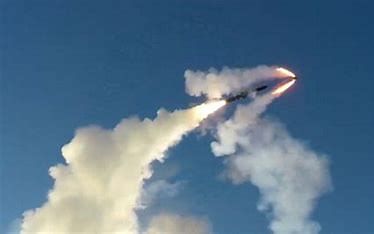
Why in News?
Russia’s Onyx supersonic cruise missile, which has frequently struck Ukrainian targets, is slated to get deadlier with a new target seeker.
About Onyx Missile:
- The P-800 Onyx, a supersonic medium-range cruise missile, is designed to combat surface ship groups, as well as to destroy ground targets in conditions of strong fire and electronic countermeasures.
- Features:
- Also known as Russian Brahmos, it can reach speeds of over 3,000 km/h, making it extremely difficult to intercept.
- Additionally, the missile operates at an altitude of 10-15 meters above land or water, further enhancing its stealth capabilities.
- The missile has a range of up to 300 kilometers in its default trajectory and a range of 120 km in a low-altitude trajectory.
- It can be launched from surface ships, submarines and land-based equipment. It is a self-guided munition, designed with the "shoot and forget" principle in mind.
- Unlike some other missiles that rely on extensive target data, the Onyx missile requires minimal information about its target to strike it successfully.
Source: Economic Times
|
44 videos|5283 docs|1115 tests
|
















